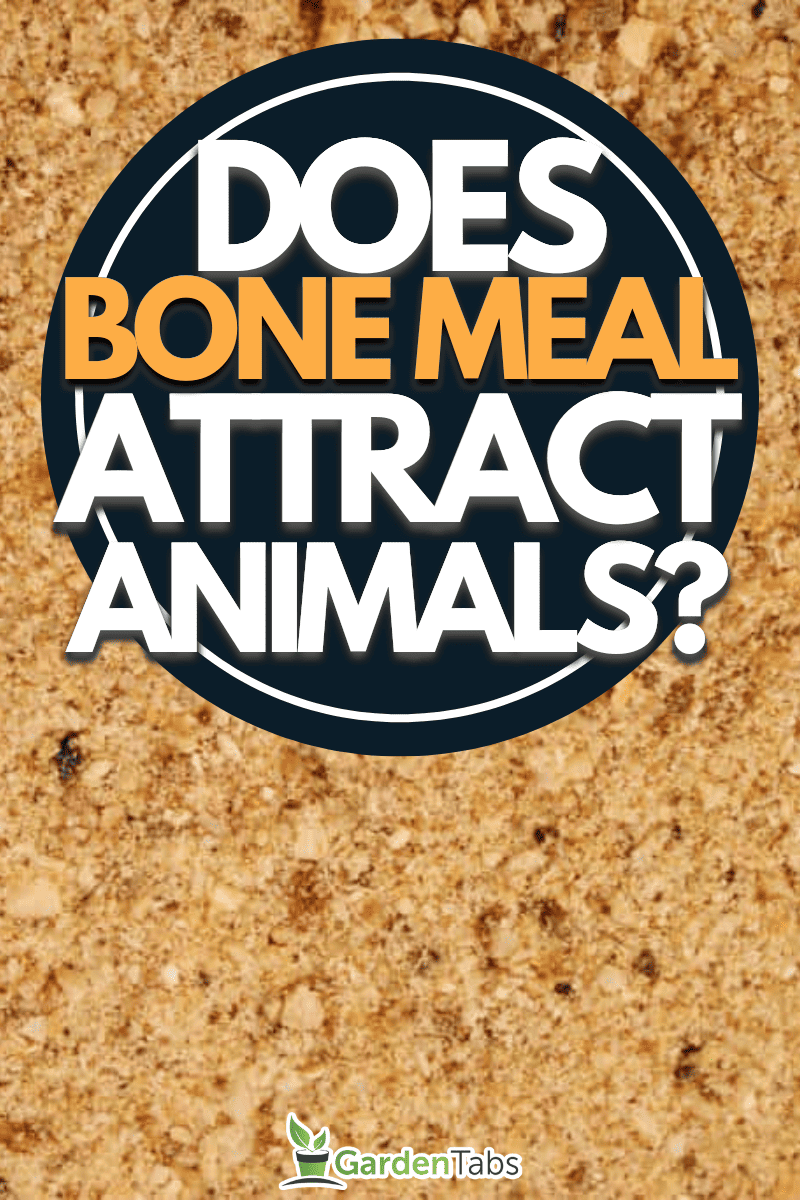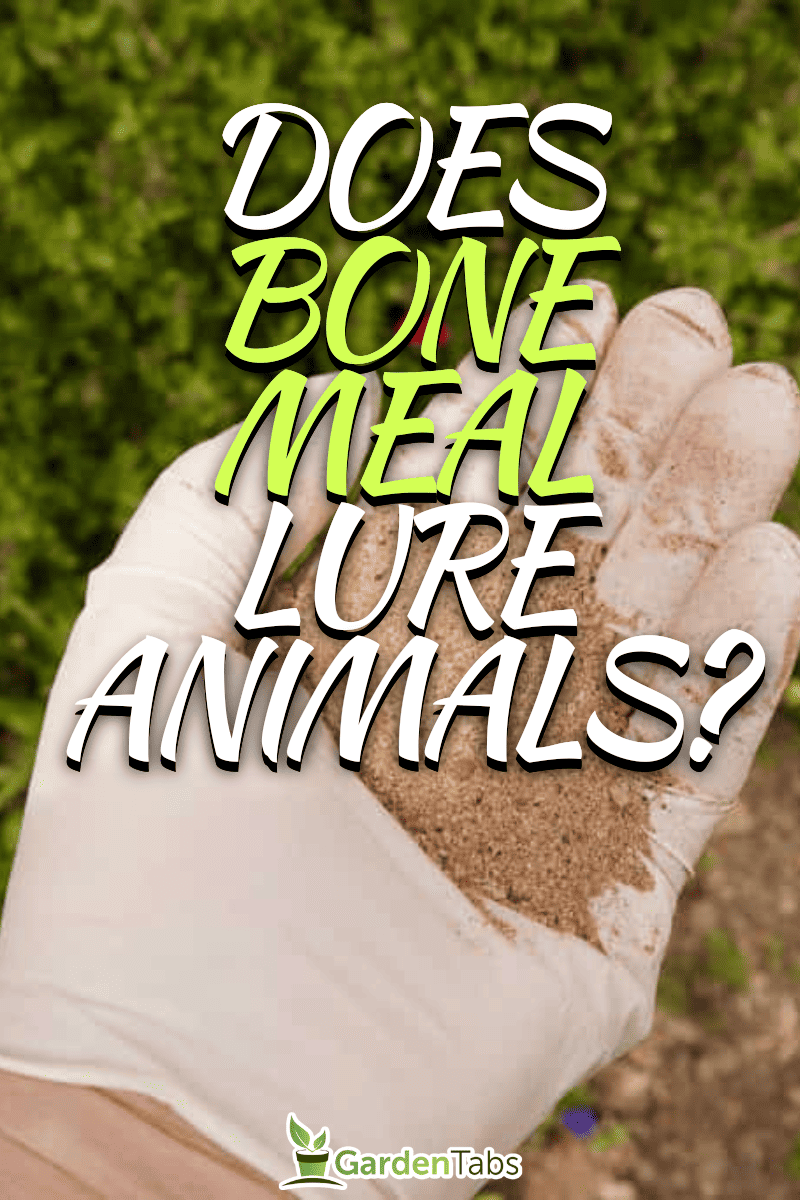Bone meal is a type of organic fertilizer made up of ground-up animal bones and by-products that can deliver essential nutrients to any soil deficient of it. We have done the research to provide you with everything you need to know about bone meal and what animals it could attract.
Bone meal can attract animals. Vermin such as rats, skunks, and raccoons can pick up the smell of the ground-up animal byproduct under your soil, even if it is unnoticeable to humans.
House pets such as cats and dogs can also detect the smell, and it can entice them to start digging up your garden.
Even if bone meal can provide nutrition to your soil, it can also cost you your garden's safety. Continue reading as we discuss other important information that can be useful if you are planning to use bone meal for your garden.
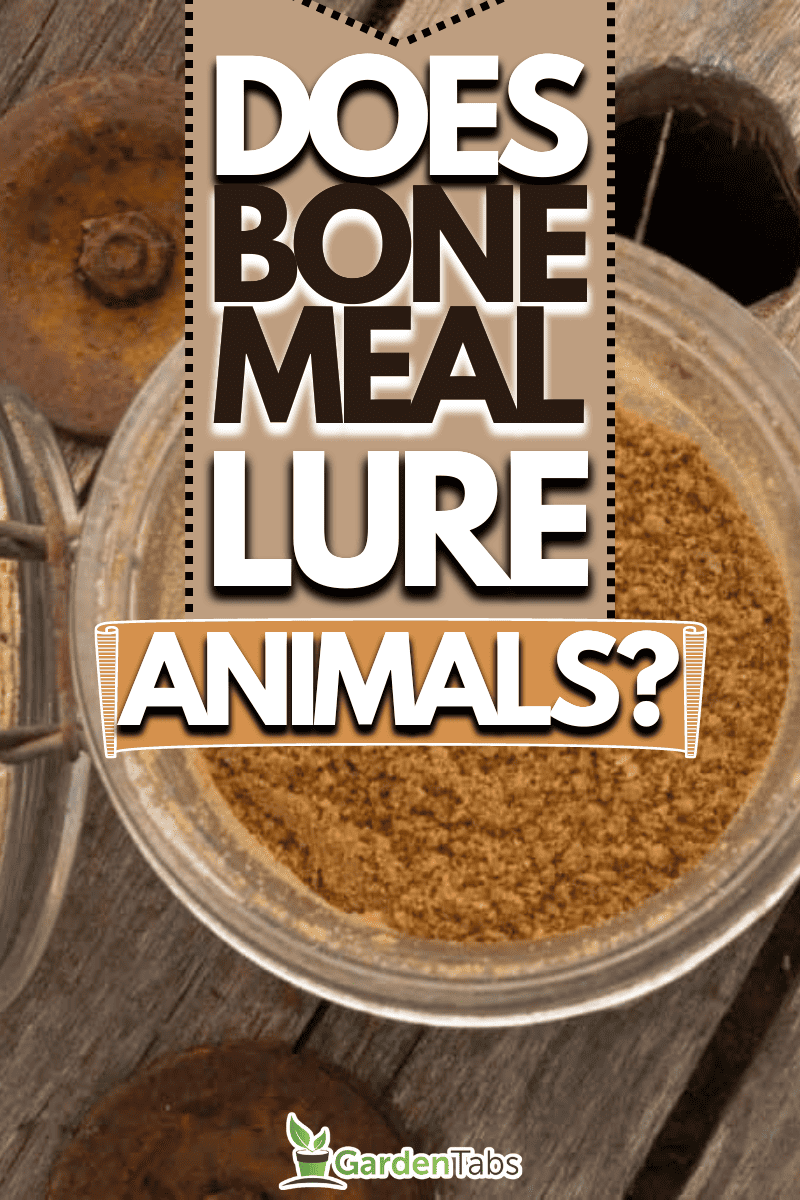
Do Animals Like Bone Meal?
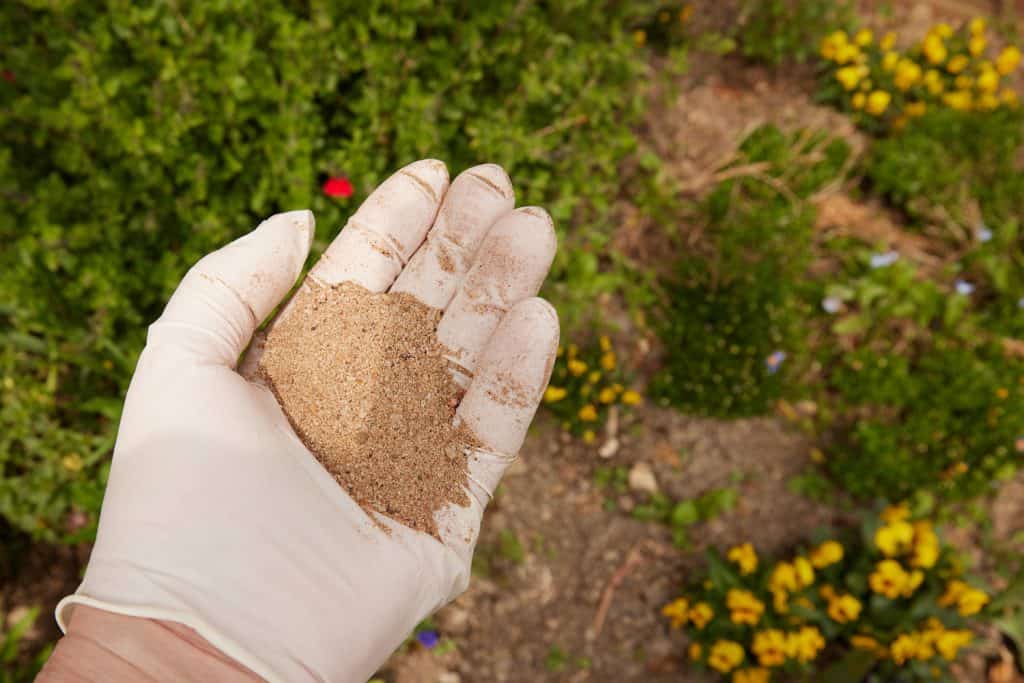
Bone meal is an organic fertilizer rich in calcium and phosphorus, which are both essential to ensure healthy soil in which to grow your plants. The organic fertilizer is made up of ground-up animal bones that are boiled and de-fatted, as well as other animal farm or slaughterhouse by-products.
Bone meal is meant to provide calcium and phosphorous to a soil that lacks it, and it is not meant to be used haphazardly.
Since bone meal is organic, it takes a large quantity to make your soil toxic. However, adding bone meal to soil that already has high amounts of calcium and phosphorous can cause negative effects on the plants growing in it.
Too much bone meal added to soil that does not need it will raise the amounts of calcium and phosphorous to an unhealthy level, eventually making the soil too toxic for your plants to thrive in.
Another drawback of applying too much bone meal in your soil is the vermin and pests that can pick up its smell.
Since bone meal is made up of animal by-products, it releases a scent that is appetizing for omnivorous and carnivorous vermin such as rats, skunks, raccoons, and the occasional fox.
These animals can pick up scents that the human nose can't, and the smell of the bone meal can entice them to dig up the food that seems to be buried under the soil.
How Do I Use Bone Meal For My Soil?
When using bone meal fertilizer for your garden, you should take note of three things. First, you need to be sure that your soil really needs the calcium and phosphorous present in bone meal before feeding it to your soil.
Keeping this in mind is very important because it will help you avoid unintentionally raising the pH levels of the garden soil.
Another thing to take note of is the amount of bone meal you plan to add to your soil. As we mentioned before, it takes a large amount of this organic fertilizer to make your soil toxic, but it does not take a lot for its contents to attract unwanted trespassers like vermin and pests.
Make sure to add just enough bone meal to the soil and avoid using it unsparingly. For crop bulbs, the general rule is to sprinkle three cups of bone meal powder or granules on every 100 square feet of soil.
Use one tablespoon of organic fertilizer per two square feet of soil for smaller spaces. When using bone meal for flowering bulbs such as tulips and dahlias, one handful is enough for three pieces of bulbs buried under at least five to six inches of good, healthy soil.
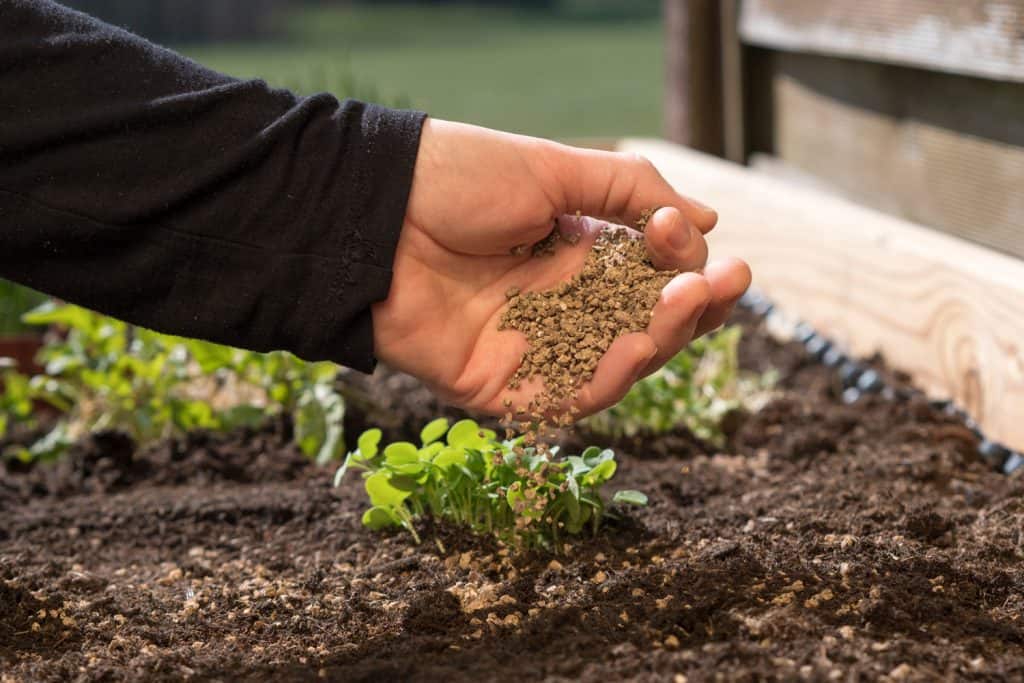
The last thing to keep in mind before adding bone meal is that you should incorporate the fertilizer properly into the soil. By carefully burying the fertilizer in your soil, you will ensure that the soil can absorb the fertilizer well.
In addition to this, burying the bone meal under the soil will also reduce the chances of any pests from picking up the scent and attempting to dig up your garden soil.
For preparing soil when sowing new seeds, sprinkle the bone meal before raking the fertilizer well into the ground. If your plants are already well-established in the soil, it is important to take extra care when mixing the fertilizer so as to avoid hitting any roots underneath.
The most important step when incorporating the bone meal is watering the soil enough to allow the powder or granules of the fertilizer to settle into the ground.
Is Bone Meal Harmful To Pets?
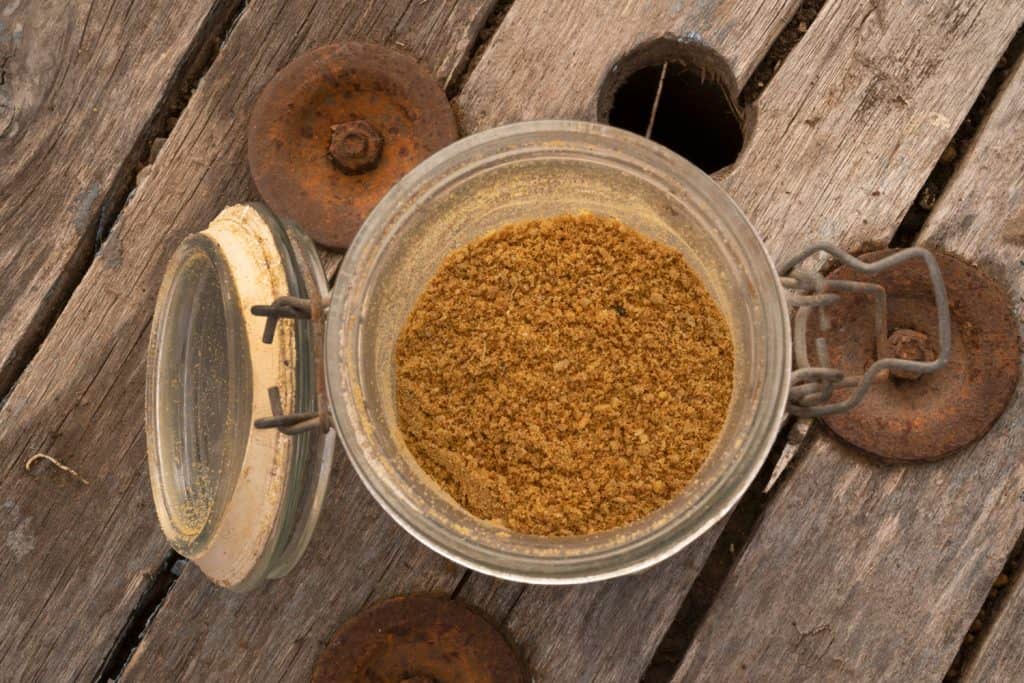
While calcium- or phosphorous-deficient plants can benefit from bone meal, other living creatures can be harmed by the fertilizer.
Among the other nutrients essential for good plant growth, bone meal contains iron and nitrogen, which can cause mild to severe reactions to your pets when ingested.
If consumed in small amounts, bone meal nutrient contents can cause stomach aches and food poisoning.
However, in large amounts, the reaction can be severe, and bone meal can seriously threaten your pet's life. Below is a list of possible symptoms to look out for if you suspect that your house pet has ingested bone meal.
- Diarrhea
- Vomiting (Check for blood in the vomit as this can indicate serious internal organ issues.)
- Nausea
- Weakness/Lethargy (Make sure to compare your pet's current disposition. A general lack of energy and interest compared to your pet's usual behavior can indicate lethargy.)
- Bloating (Check all sides of your pet's abdomen and notice if your pet whines or complains about any pain in the area.)
- Drooling
- Muscle tremors/seizures
- Blood in the stool
There are various other ways to check if you suspect that your pet has consumed bone meal. The most obvious one is immediately after consumption, and you can still notice powder or granules of bone meal on their fur or under their paws.
Once you suspect that your pet has consumed bone meal, an urgent visit to the veterinarian is recommended even if your pet does not show any of the symptoms listed above.
Even if a very small amount of bone meal was consumed, your pet could still suffer negative after-effects from the plant bulbs, bacteria, or molds they have consumed alongside the bone meal.
Can I Make Bone Meal At Home?
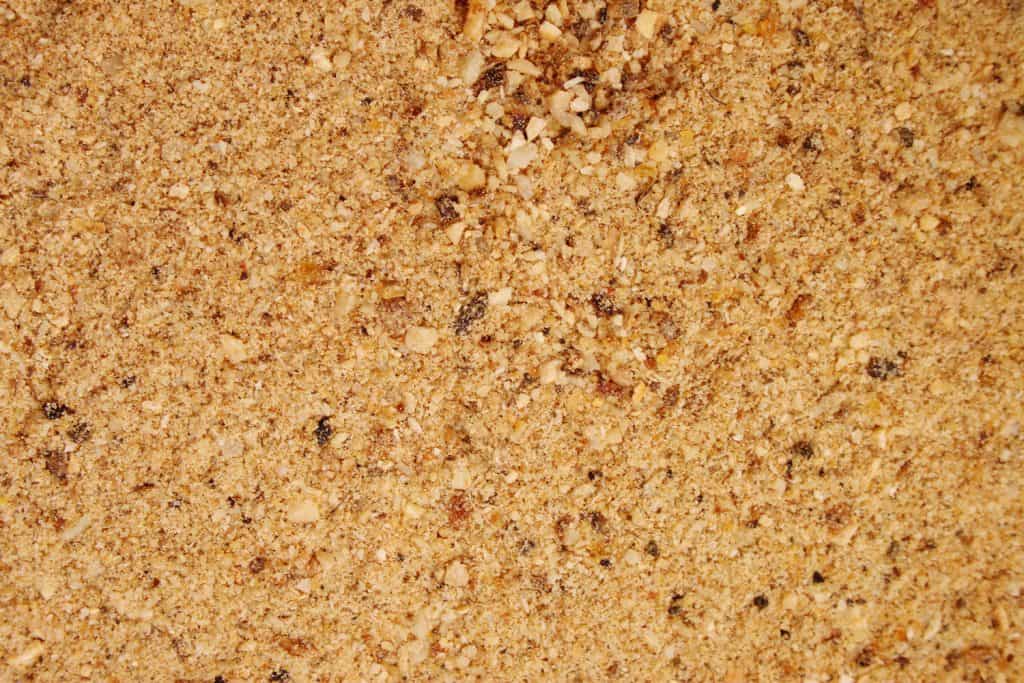
Farmers traditionally use bone meal fertilizers to aid calcium- or phosphorous-deficient soil. Although synthetic alternatives exist to this organic fertilizer, you can make your own bone meal in the comfort of your home.
Making bone meal fertilizer at home is easy, and since bone meal is made up of animal bones, the ingredient is easy to obtain. Cow bones are used to make the fertilizer. However, pork or any smaller animal bones can be a good alternative for homemade bone meals.
How To Use Smaller Bones For Homemade Bone Meal Fertilizer
Bones in bone meal fertilizers are boiled and de-fatted before they are dried and ground up. You can do the same on smaller cow or pig bones, but turkey and chicken bones make the process much easier.
Even leftover bones from dinner can be used for a homemade bone meal fertilizer. Below is a simple list you can follow if you are planning to make your own bone meal fertilizer at home.
- Choose your preferred type of animal bone. Any type of animal bone can be made into bone meal fertilizer.
- Boil the animal bones for at least an hour or until the meat has tenderized and can be easily separated from the bone.
- Strip the animal bone of any remaining meat and fat with a sharp kitchen knife.
- Bake the bones in a preheated oven at 400°F until they are dry, brittle, and easy to grind.
- Grind the bones in a blender or a food processor for a fine powdery texture. You can also choose to use a mortar and pestle if you prefer a granulated bone meal.
In review
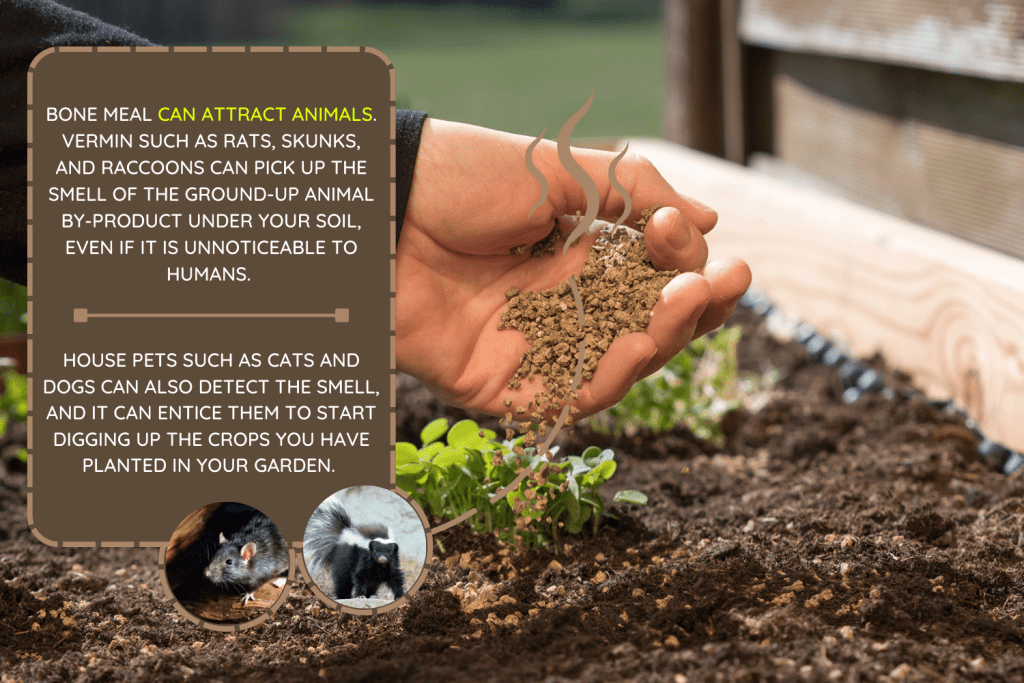
Bone meal can help provide essential nutrients to your plant's soil. However, plants are not the only living creatures that a bone meal fertilizer can attract. This article discussed the possibility of bone meal fertilizers attracting animals such as vermin and pests.
We also discussed the possibility of your pets being lured by bone meal and the measures you should take if you suspect that your pet has ingested the fertilizer. Make sure to use bone meal responsibly for the benefit of your plants and the animals in your area.
Made it to the end? Check out some of our other related posts!
When To Apply Bone Meal To Your Garden [And How To]
4 Best Fertilizers For Endless Summer Hydrangeas [And How To Use Them]

